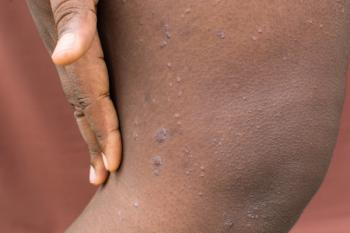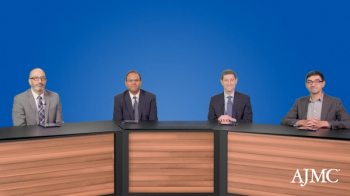
Pan-Immune-Inflammation–Based Nomogram Predicts OS, PFS in Epithelial Ovarian Cancer
Researchers developed a pan-immune-inflammation–based nomogram to accurately predict overall survival (OS) and progression-free survival (PFS) in patients with epithelial ovarian cancer
Researchers constructed a pan-immune-inflammation (PIV)–based nomogram to predict overall survival (OS) and progression-free survival (PFS) in those with
EOC
They highlighted nomograms as comprehensive, easy-to-read models that are widely used to predict the prognosis of patients with cancer. In particular, the column-diagram model can predict the survival of individual patients, with several column-row diagrams already created for patients with EOC. However, the researchers noted that these were made with publicly available data from the Surveillance, Epidemiology, and End Results (SEER) database, which involves limited studies with Chinese data.
Therefore, they emphasized the need for column-line diagrams specifically for Chinese patients with EOC to improve accuracy and utility. As a result, the researchers aimed to create a predictive scoring model based on PIV levels to predict OS and PFS in Chinese patients with EOC; PIV is a novel integrated biomarker including platelet, neutrophil, monocyte, and lymphocyte counts previously found to predict survival outcomes in patients with EOC.3
To do so, they analyzed eligible patients treated at Xijing Hospital from January 2010 to December 2019.1 Eligible patients’ laboratory data were verified through the case history system and recorded in detail. More specifically, laboratory data were collected one week before treatment, and clinicopathological data were collected from the patient’s medical record.
The study’s end points were OS, or the time between the start of treatment and death from any cause; and PFS, or the time between the start of treatment and the first progression of disease/death. The researchers conducted follow-ups via telephone or routine outpatient monitoring systems to record the patient’s condition or cause and date of death, if applicable.
Patients were divided into 2 subgroups: high (PIV > 254.9) and low (PIV ≤ 254.9) PIV. Then, the researchers developed a simple score prediction model based on several independent prognostic parameters using via Cox regression analysis. To evaluate the model’s performance, they used receiver operator characteristic (ROC) curves, calibration plots, and decision analysis (DCA) curves. Similarly, the researchers used Kaplan-Meier curves to confirm that the model could distinguish well between low- and high-risk groups.
The study population consisted of 576 patients with EOC, who were randomly assigned to the training (n = 405) and validation (n = 171) cohorts at a ratio of 7:3. During follow-up, 224 patients (38.9%) relapsed and 249 (43.2%) died, resulting in a median PFS of 36.7 months and a 3-year cumulative OS rate of 67.4%.
Also, they noted that patients with a high PIV had significantly different survival outcomes than those with low PIV. More specifically, the 3-year survival rates were 61.34% in patients with high PIV and 76.71% in patients with low PIV; the 5-year survival rates were 25.21% in those with high PIV and 51.14% in those with low PIV. Similarly, the 3-year PFS was 40.90% in patients with high PIV and 65.30% in patients with low PIV. Also, the 5-year PFS was 19.33% in patients with high PIV and 39.73% in patients with low PIV.
Through the Cox analysis, the researchers identified independent prognostic factors associated with OS and PFS. The 6 variables associated with OS (P < .05) included positive lymph nodes, histological type, pre-treatment cancer antigen (CA)125 levels, ascites, PIV, and the International Federation of Gynecology and Obstetrics (FIGO) stage. Additionally, they identified 5 independent prognostic indicators of PFS: FIGO stage, pre-treatment CA125 value, PIV, histological stage, and surgical modality.
Based on the identified independent prognostic factors, a nomogram was created to predict 3-, 5-, and 10-year OS and PFS in patients with EOC. In the training cohort, the ROC curves for predicting 3-, 5-, and 10-year OS showed area under the curve (AUC) values of 0.713, 0.796, and 0.839, respectively; in the validation cohort, they were 0.676, 0.803, and 0.685, respectively.
Additionally, the AUC values for predicting 3-, 5-, and 10-year PFS in the training cohort were 0.730, 0.799, and 0.826, respectively. The AUC values for predicting 3-, 5-, and 10-year PFS in the validation cohort were 0.700, 0.754, and 0.727, respectively. The researchers concluded that the calibration curves for both the training and validation cohorts demonstrated strong alignment between the observed survival rates and the survival predictions made by the nomogram.
Lastly, they acknowledged their limitations, one being that the number of patients analyzed was relatively limited. Also, the analyzed patients were from a single cancer center. Therefore, there was potential selection bias, meaning the data may not reflect the true distribution of PIV values within patients with EOC. Consequently, the researchers stressed the need for further research.
“...unfortunately, we have not been able to obtain sufficient external validation data to support our findings to date,” the authors wrote. “However, we are actively seeking collaboration with other centers to confirm our results.”
References
- Liao W, Li J, Feng W, et al. Pan-immune-inflammation value: a new prognostic index in epithelial ovarian cancer. BMC Cancer. 2024;24(1):1052. doi:10.1186/s12885-024-12809-2
- Sankaranarayanan R, Ferlay J. Worldwide burden of gynaecological cancer: the size of the problem. Best Pract Res Clin Obstet Gynaecol. 2006;20(2):207-225. doi:10.1016/j.bpobgyn.2005.10.007
- El Bairi K, Kharmach I, Zaimi A et al. 49P first report on pan-immune-inflam-mation value as a new prognostic factor in ovarian cancer: a biomarker analysis of OVANORDEST-1 study. ESMO Open. 2023;8(supp 1). doi:10.1016/j.esmoop.2023.100829
Newsletter
Stay ahead of policy, cost, and value—subscribe to AJMC for expert insights at the intersection of clinical care and health economics.








































